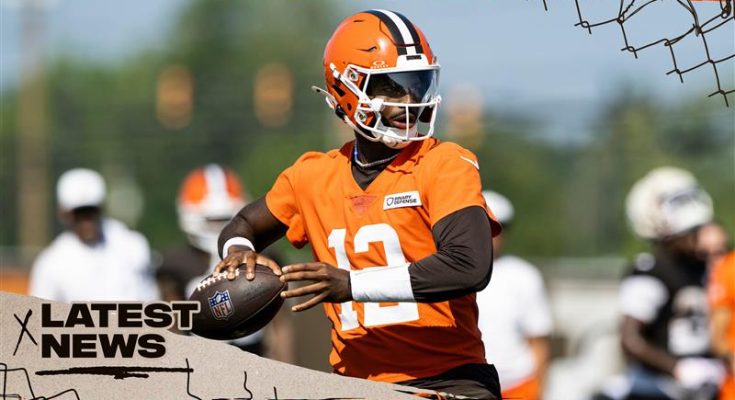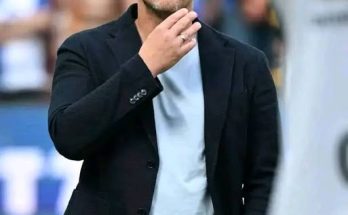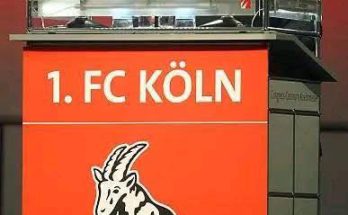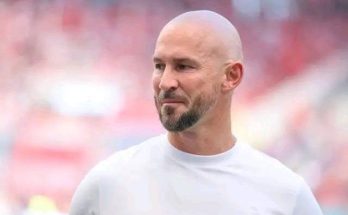**Shedeur Sanders Injures Oblique, Held Out of Practice: What It Means for Colorado**
Shedeur Sanders, the star quarterback for the University of Colorado Buffaloes and the son of head coach Deion Sanders, suffered an oblique injury early in practice on Wednesday, forcing him to sit out for the remainder of the session. The injury, though not initially deemed severe, raises concerns about his availability and the team’s offensive continuity as they prepare for the upcoming season.
### **The Injury and Immediate Impact**
According to team sources, Shedeur Sanders felt discomfort in his oblique muscle while throwing passes during drills. Medical staff quickly evaluated him and decided to hold him out as a precaution. Oblique injuries, while common in baseball, can also affect quarterbacks due to the rotational force required in throwing motions. Depending on the severity, recovery can range from a few days to several weeks.
For now, the Buffaloes are optimistic that Sanders’ injury is minor. However, any lingering discomfort could limit his throwing reps in the coming days, which is far from ideal for a quarterback who relies on timing and chemistry with his receivers.
### **Shedeur’s Importance to Colorado’s Offense**
There’s no understating Shedeur Sanders’ role in Colorado’s offense. After transferring from Jackson State, where he thrived under his father’s coaching, he quickly established himself as one of the most dynamic quarterbacks in college football. His poise in the pocket, accuracy, and ability to extend plays make him the engine of the Buffaloes’ attack.
Last season, Sanders threw for over 3,200 yards with 27 touchdowns and just four interceptions, showcasing his efficiency and decision-making. His leadership has also been instrumental in Colorado’s resurgence, helping turn the program into a competitive force in the Pac-12.
If Sanders were to miss any significant time, Colorado would have to turn to backup Ryan Staub or true freshman Walter Taylor. While both have shown promise, neither has the same level of experience or command of the offense. The drop-off could be noticeable, especially in high-pressure situations.
### **Historical Context: Quarterback Injuries and Team Performance**
Injuries to starting quarterbacks have derailed promising seasons across college football. Last year, Florida State’s playoff hopes took a major hit when Jordan Travis suffered a season-ending leg injury. Similarly, North Carolina’s offense struggled when Drake Maye dealt with nagging injuries late in the year.
For Colorado, keeping Shedeur healthy is paramount. The Buffaloes face a tough schedule, including matchups against Nebraska, Oregon, and Utah. Even if this oblique injury is minor, it serves as a reminder of how quickly a team’s fortunes can change if their QB1 isn’t at full strength.
### **How Colorado Adjusts in the Short Term**
With Sanders limited, the Buffaloes will likely take a cautious approach. Expect more reps for Staub and Taylor in practice, along with possible scheme adjustments to reduce strain on Shedeur’s throwing motion. The coaching staff may also emphasize the running game more in early-season contests to ease him back into full action.
Additionally, this injury could accelerate the development of the backup QBs. Staub, a redshirt freshman, has shown flashes in limited action, while Taylor brings a dual-threat element that could add a different dimension to the offense if needed.
### **Long-Term Implications**
While oblique injuries are typically short-term, recurring issues could linger if not managed properly. The Buffaloes’ medical staff will likely monitor Sanders closely, possibly limiting his full-speed throws until he’s completely pain-free.
Beyond physical recovery, there’s also the mental aspect. Quarterbacks who play through discomfort sometimes develop mechanical flaws to compensate, leading to further issues. Ensuring Shedeur is 100% before returning to full action will be crucial.
### **Fan and Team Reaction**
Unsurprisingly, Colorado fans reacted with concern on social media after news of the injury broke. Shedeur isn’t just the team’s best player—he’s also the face of the program. His presence elevates the Buffaloes’ national profile, and his absence, even briefly, would be a major storyline.
Teammates, however, expressed confidence in his quick return. Wide receiver Travis Hunter, Sanders’ longtime teammate from Jackson State, downplayed the severity, saying, *“Shedeur’s tough. He’ll be back stronger.”*
### **What’s Next for Shedeur and Colorado?**
The immediate focus will be on Sanders’ recovery timeline. If he returns to practice within a few days, this will likely be a non-issue. However, if the injury lingers into the season, it could force Colorado to adjust its offensive approach.
For now, all eyes will be on the next practice reports. The Buffaloes open their season on August 31 against North Dakota State, and having Shedeur Sanders at full strength will be critical against a tough FCS opponent.
### **Final Thoughts**
Injuries are an unavoidable part of football, but when they involve a player as vital as Shedeur Sanders, the stakes are higher. Colorado’s success this season hinges on his health and performance, making this oblique injury a situation worth monitoring closely.
For now, the Buffaloes are breathing a sigh of relief that the injury appears minor. But in a long season where every rep matters, even a small setback can have ripple effects. The hope is that Sanders returns quickly, with no lingering effects, ready to lead Colorado to another memorable season.
Until then, the Buffaloes will proceed with caution, knowing their championship aspirations rest largely on the arm—and health—of their star quarterback.



